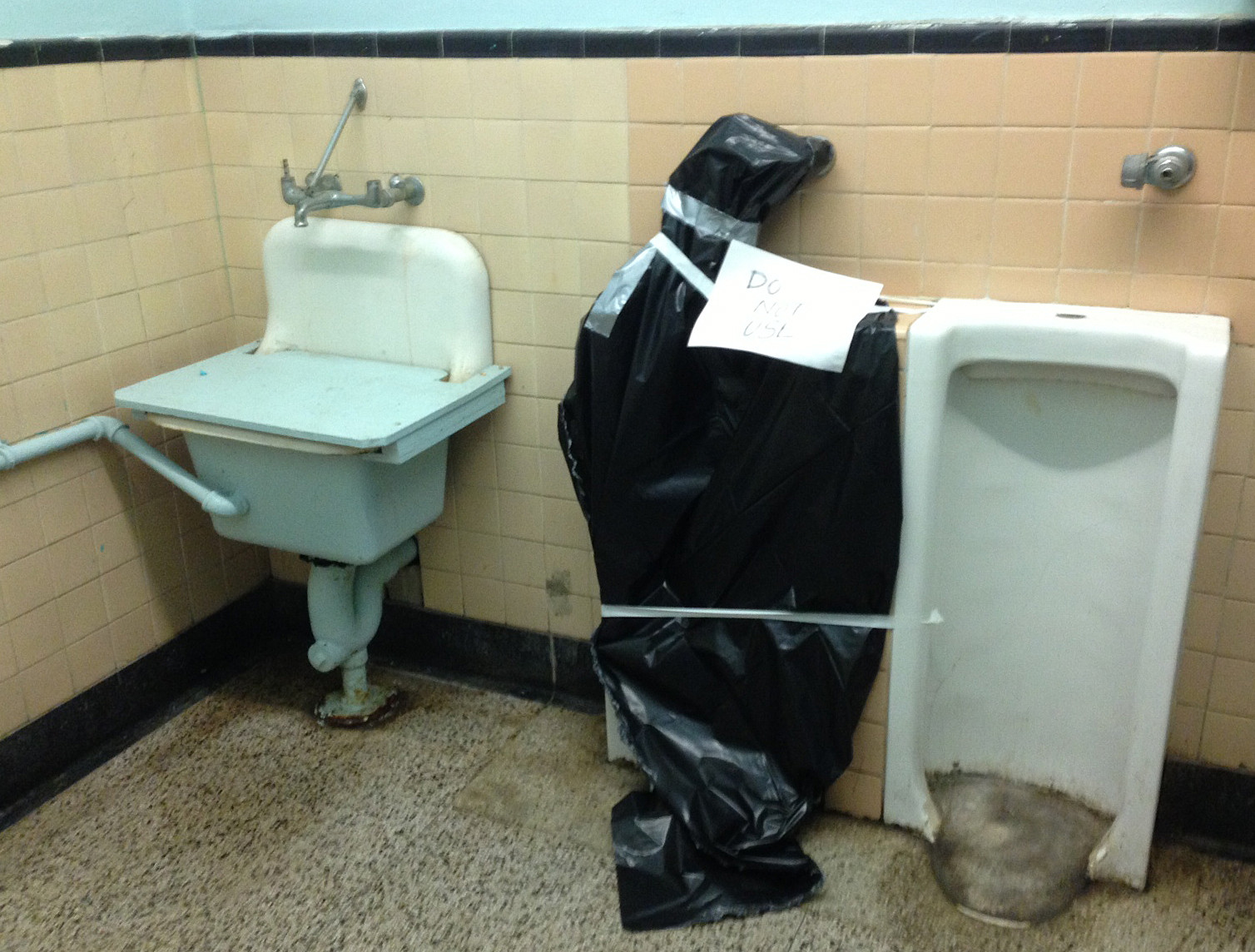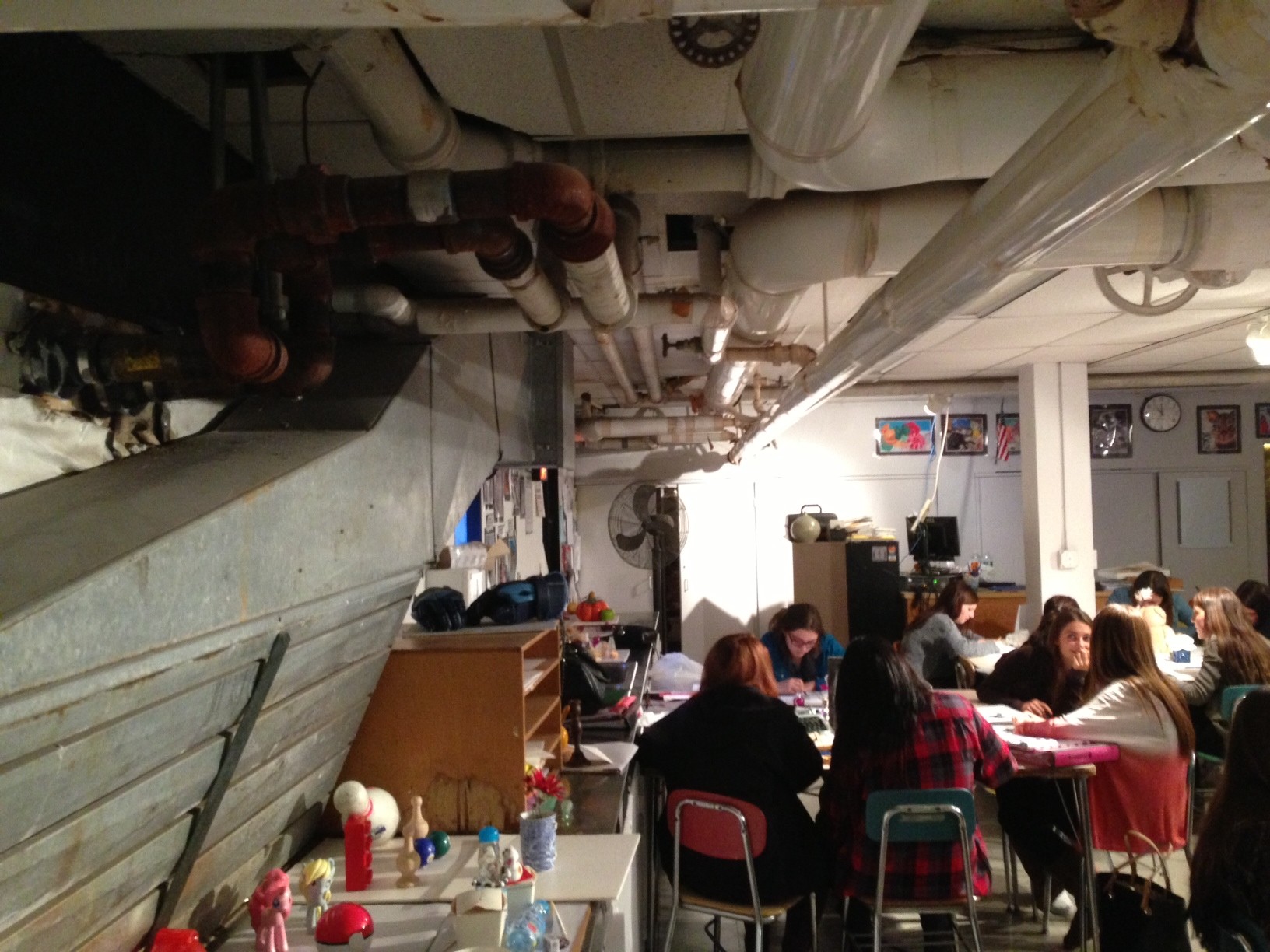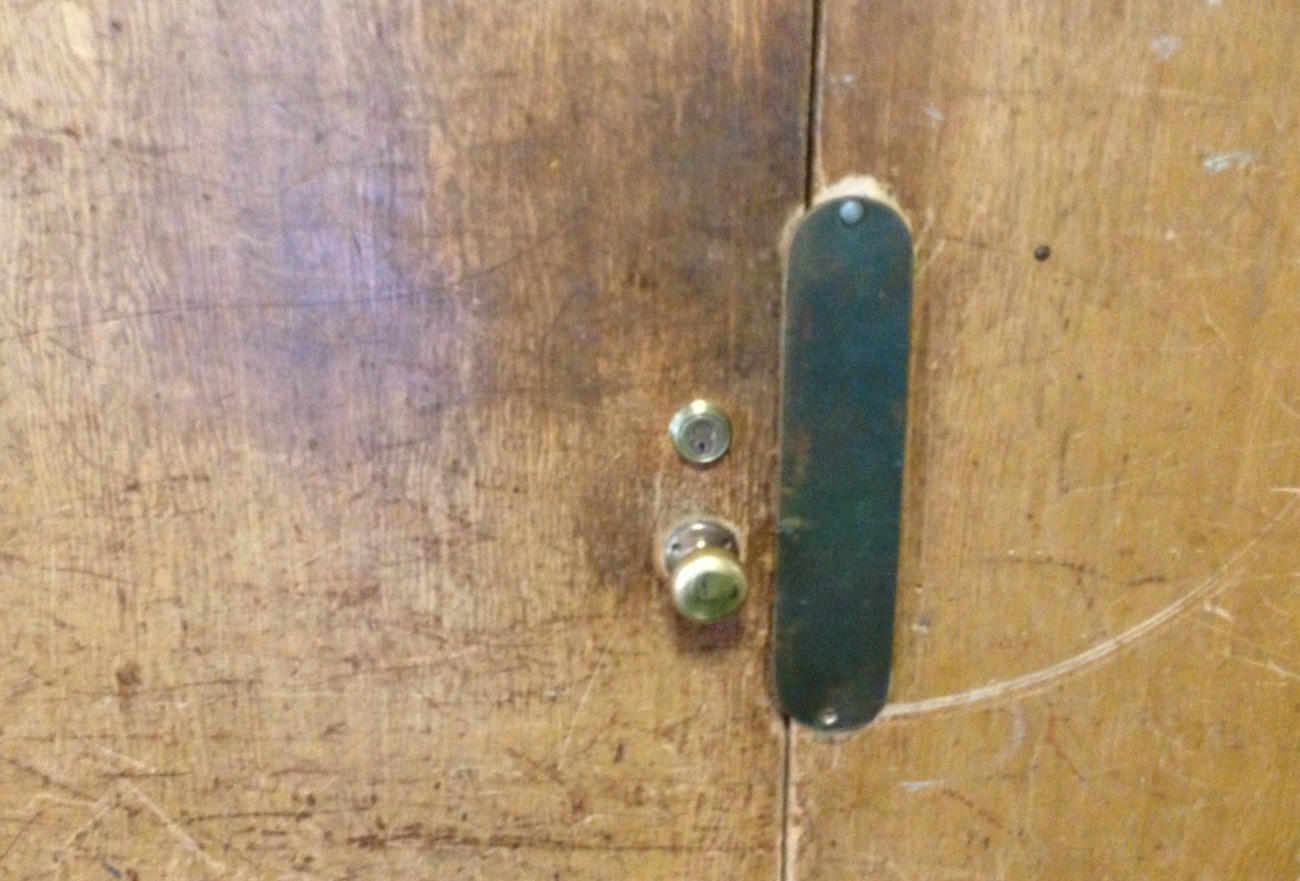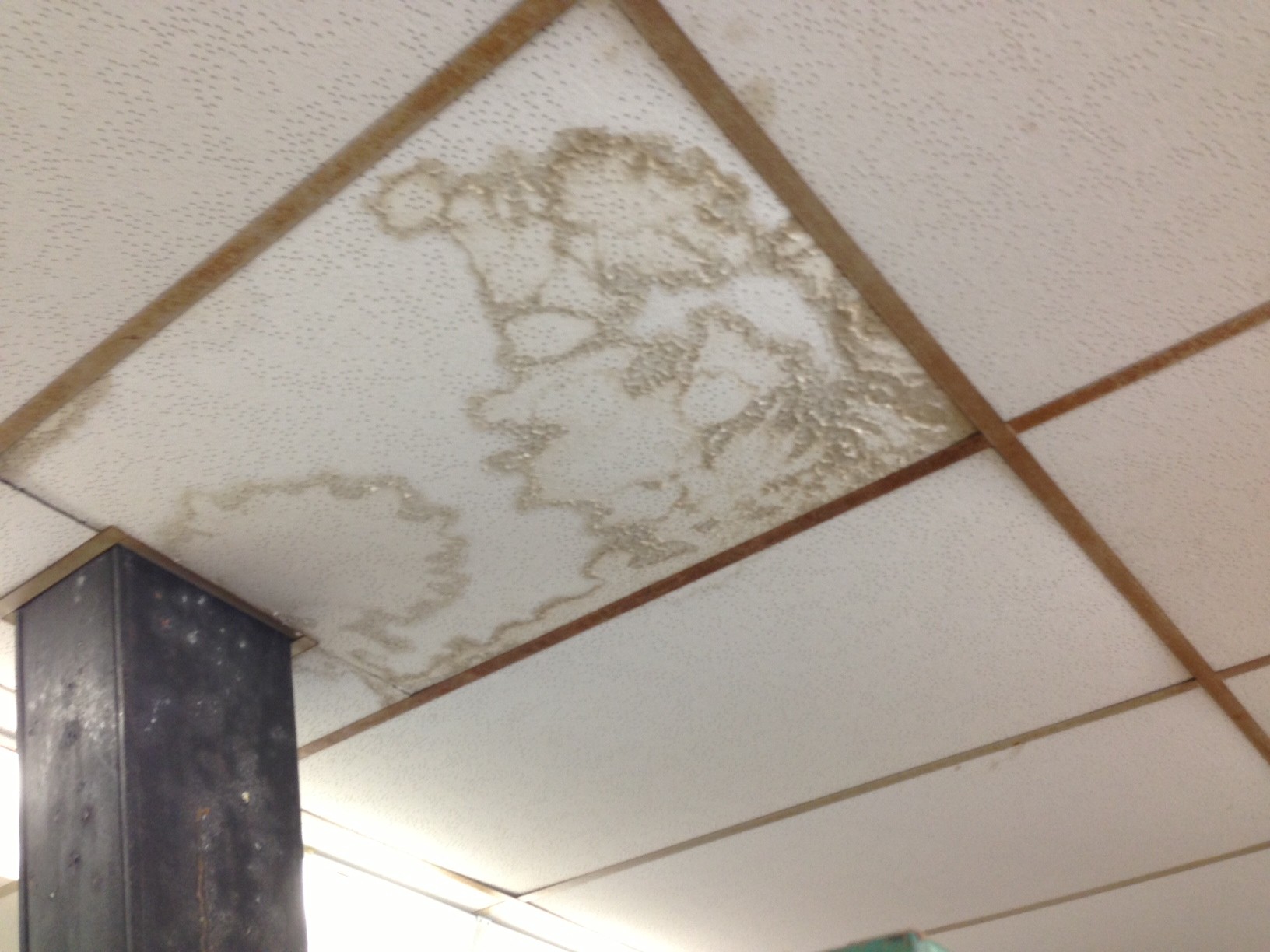Bellmore-Merrick Central District superintendent offers facilities tour
Gearing up for $49.89M bond vote, schools chief opens buildings' doors
In schools throughout the Bellmore-Merrick Central District, many wooden doors are scratched up, and their handles don’t latch properly.
In most bathrooms, one or more sinks and toilets are broken and covered over. In Mepham High School’s football locker room, where the smell of sweat suffuses the air, the sink is sealed with plywood and the urinals are cemented over.
In science classrooms, black laboratory sinks are stained by chemicals and falling through in places. At Calhoun High, Bunsen burners have been disconnected in some classrooms because gas release valves no longer work. All that remains are the metal pipes that once sent gas to the rooms.
A number of ceilings at each of the district’s five schools are covered by brown water stains from leaky pipes and roofs. The underside of Grand Avenue Middle School’s front portico is full of cracks and chipped paint because of a leaky roof.
And grass playing fields, including practice fields, are worn down because of overuse, with dirt patches covering sections of the fields.
These were among the problems that were revealed during a more than two-hour tour of the district’s schools –– Calhoun, Kennedy and Mepham high schools and Grand Avenue and Merrick Avenue middle schools –– that the Herald Life took on Oct. 18. John DeTommaso, the Central District superintendent, led the tour.
With a $49.89 million bond vote to repair the district’s aging schools approaching on Dec. 2, the Herald Life took the tour to examine why school officials believe the bond is needed.
The Central District’s youngest school –– Kennedy –– is 47 years old. Its oldest –– Mepham –– is 76 years old.
What the bond would do
A little more than half of the total bond amount –– $26.89 million –– would be returned to the school district in state building aid, which Bellmore-Merrick would receive over the bond’s 15-year life.
If passed, the bond would cost local taxpayers $104 per year, or $8.67 per month. Work could begin next summer, if all goes as planned, and most of the renovations would be done over the next three summers.













